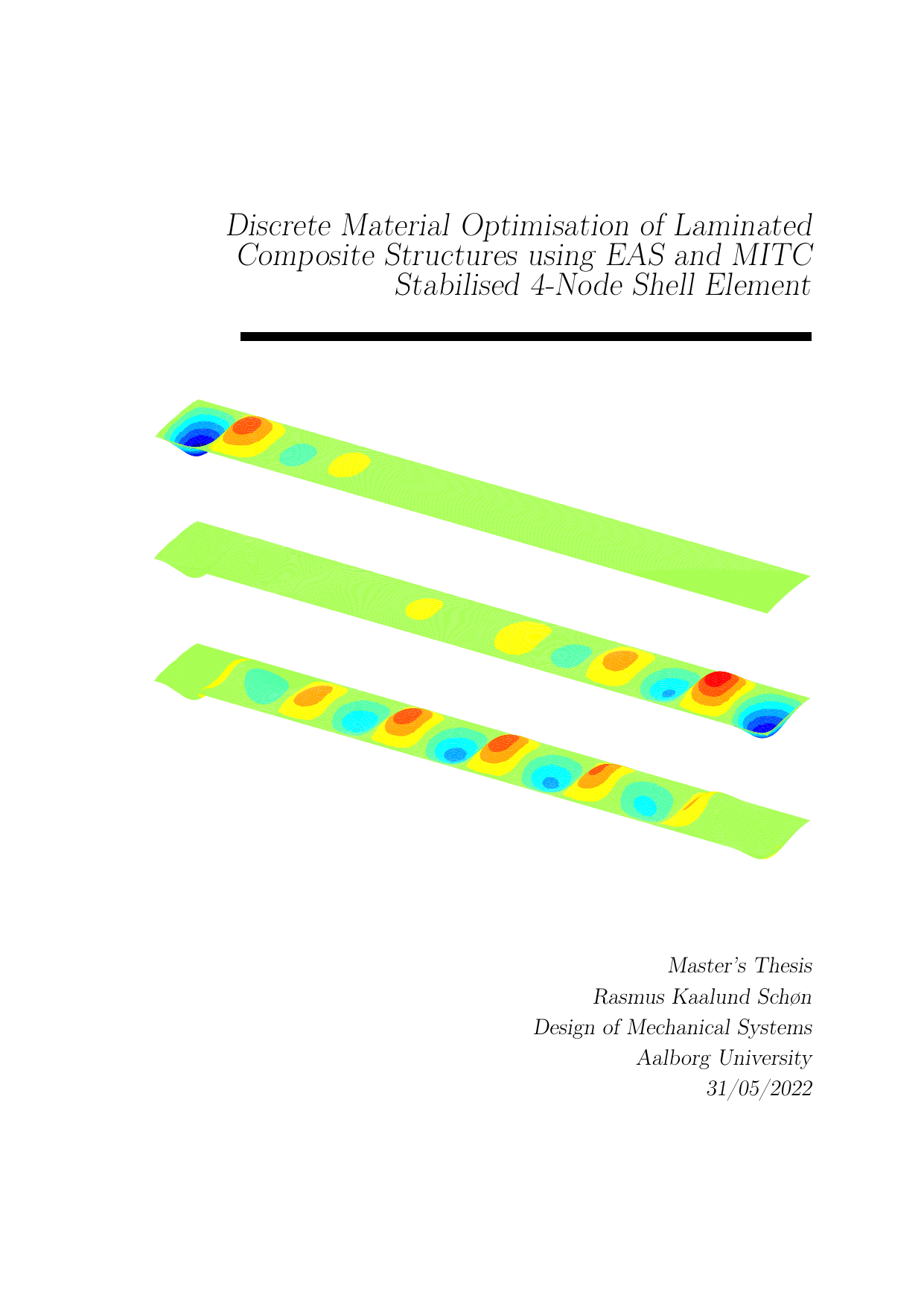
Discrete Material Optimisation of Laminated Composite Structures using EAS and MITC Stabilised 4-Node Shell Element
Author
Term
4. term
Education
Publication year
2024
Submitted on
2024-05-31
Abstract
Simulation and optimisation methods are essential in the development process across several industries, such as wind turbines and aerospace. Computationally efficient optimisation techniques are crucial to designing complex laminated composite structures with the required functionalities, avoiding prototyping, reducing costs, and minimising time to market. This thesis uses gradient-based optimisation and the Discrete Material Optimisation (DMO) parameterisation to enhance the structural integrity of laminated composite structures. To improve the computational efficiency, analytical sensitivities of a 4-node shell element with Enhanced Assumed Strain (EAS) formulation and Mixed Interpolation of Tonsorial Components (MITC) are implemented into the MUltidisciplinary Synthesis Tool (MUST). Analytical sensitivities for buckling load factors are derived and implemented to address buckling-induced failure. Benchmark examples maximise the buckling load factors using the bound formulation and show a significant reduction in computation time compared to a 9-node isoparametric shell formulation. Given the absence of a universally accepted failure criterion for laminated composites, analytical sensitivity analyses are implemented for the maximum stress, maximum strain, and Tsai-Wu failure criteria. A benchmark example minimises the aggregate function for each of the failure criteria.
Keywords
Documents
